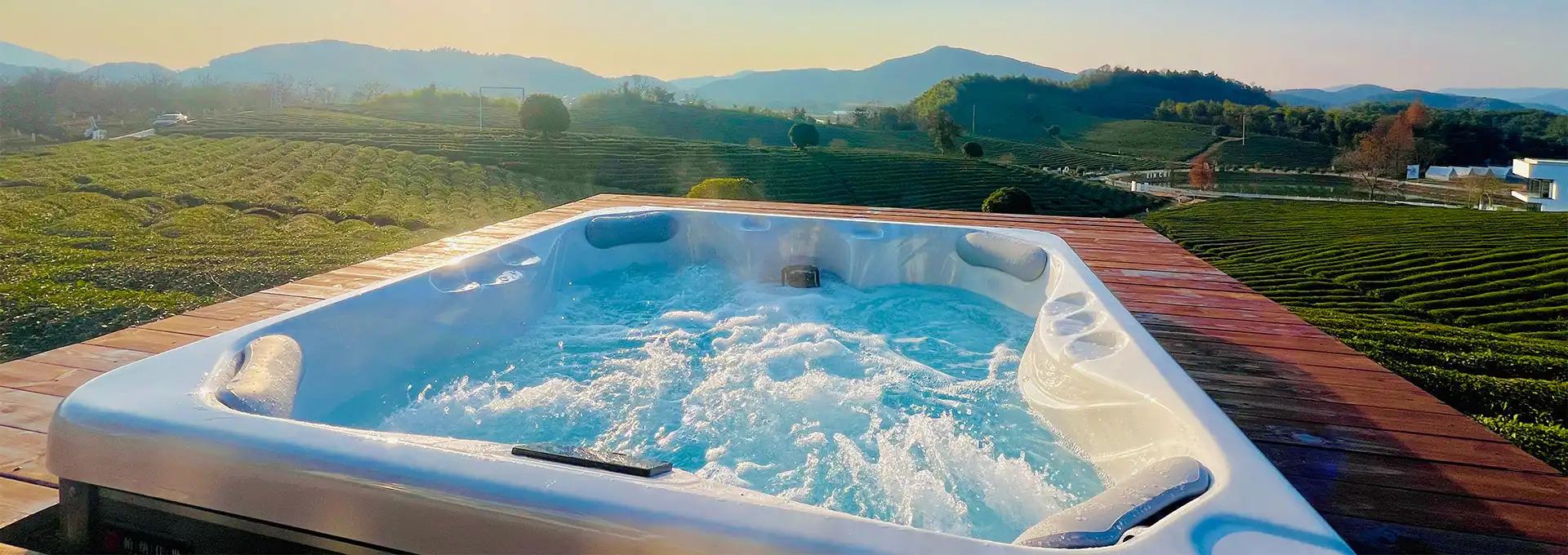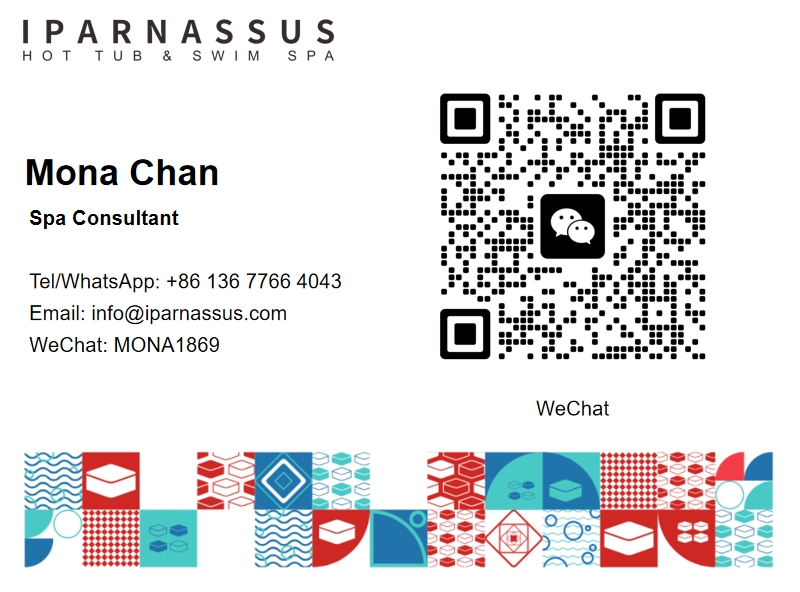How Cold Should a Cold Plunge Tub Be?
2025-04-28 10:15:04
Cold plunge tubs have gained popularity in recent years as a recovery tool for athletes and wellness enthusiasts alike. These icy baths are known for their potential benefits, including reduced inflammation, improved circulation, and enhanced recovery. However, a common question among those interested in cold therapy is: how cold should a cold plunge tub be? This blog post will explore the ideal temperature range for cold plunge tubs, factors to consider when determining the right temperature, and tips for getting the most out of your cold therapy sessions.
What is the ideal temperature range for a cold plunge tub?
Understanding the science behind cold therapy
Cold remedy, also known as cryotherapy, works by constricting blood vessels and reducing blood inflow to a specific area. When the body is exposed to cold temperatures, it triggers a natural response that can lead to colorful physiological benefits. In the environment of cold plunge barrels, the ideal temperature range is generally between 50 °F to 59 °F( 10 °C to 15 °C). This range is cold enough to stimulate the body's natural responses without being dangerously low. When immersing yourself in a cold plunge hogshead within this temperature range, you may witness a range of sensations, from original shock to a gradational deadening effect. It's important to note that while colder temperatures may feel further effective, they can also increase the threat of hypothermia and other cold-affiliated injuries.
Factors affecting the optimal temperature
The optimal temperature for a cold plunge hogshead can vary depending on several factors. particular forbearance and experience with cold remedy play a significant part in determining the right temperature for you. newcomers may want to start at the advanced end of the range and gradationally work their way down as they come more habituated to the cold wave. also, the duration of your cold plunge session can impact the ideal temperature. Shorter sessions may allow for slightly colder temperatures, while longer sessions might bear a more moderate temperature to insure safety and comfort. Environmental factors, similar as ambient temperature and moisture, can also affect how your body perceives and responds to the cold water in the plunge hogshead. It's essential to hear to your body and acclimate the temperature consequently to find the sweet spot that provides maximum benefits without causing discomfort or threat.
Balancing benefits and safety
When determining the right temperature for your cold plunge tub, it's crucial to strike a balance between maximizing the potential benefits and ensuring your safety. While colder temperatures can potentially lead to more pronounced physiological responses, they also come with increased risks. It's generally recommended to start with a temperature around 59°F (15°C) and gradually decrease it over time as your body adapts. This approach allows you to build cold tolerance safely while still reaping the benefits of cold therapy. Remember that the goal is not to push yourself to extreme temperatures but to find a sustainable practice that you can maintain consistently. Regular cold plunges at a moderate temperature are often more beneficial than infrequent, extremely cold sessions. Always prioritize safety and listen to your body's signals when using a cold plunge tub.
How long should you stay in a cold plunge tub?
Recommended duration for beginners
For those new to cold plunge therapy, it's essential to start with shorter durations and gradually increase the time as your body adapts. Beginners should aim for 1-3 minutes in the cold plunge tub, focusing on controlled breathing and maintaining a calm state of mind. This initial exposure allows your body to acclimate to the cold temperature without overwhelming your system. It's crucial to listen to your body during these initial sessions and exit the tub if you experience any discomfort or numbness. As you become more comfortable with the cold plunge experience, you can slowly extend the duration of your sessions. Remember that consistency is key when it comes to cold therapy, so it's better to have shorter, regular sessions than infrequent, longer ones. Always prioritize safety and comfort over pushing your limits, especially in the beginning stages of your cold plunge journey.
Progression and advanced techniques
As you come more habituated to cold plunge remedy, you can gradationally increase the duration of your sessions. Intermediate druggies may aim for 3- 5 twinkles in the cold plunge hogshead, while more advanced interpreters might extend their sessions to 10- 15 twinkles. still, it's important to note that longer durations do not inescapably equate to lesser benefits. The key is to find the sweet spot that works stylish for your body and pretensions. Some advanced ways include discrepancy remedy, where you alternate between the cold plunge hogshead and a hot hogshead or sauna. This system can enhance rotation and give a more violent remedial experience. Another fashion is to incorporate deep breathing exercises or contemplation while in the cold plunge hogshead to maximize the internal benefits of the practice. Anyhow of your position of experience, always pay attention to your body's signals and exit the hogshead if you witness any signs of torture or inordinate discomfort.
Monitoring your body's response
One of the most critical aspects of cold plunge remedy is learning to cover and interpret your body's responses. During your time in the cold plunge hogshead, pay attention to how your body feels and reacts to the temperature. original shock and discomfort are normal, but these sensations should subside as your body adapts. Watch for signs of hypothermia, similar as violent shivering, confusion, or vocalized speech, and exit the hogshead incontinently if you witness any of these symptoms. It's also important to cover your skin for any unusual abrasion or impassiveness. After your cold plunge session, take note of how your body feels in the hours and days following. numerous people report increased energy, reduced muscle soreness, and bettered mood. By keeping track of these responses, you can OK - tune your cold plunge routine to maximize its benefits while icing your safety and comfort.
What are the potential benefits of using a cold plunge tub?
Physical benefits of cold therapy
Cold plunge tubs offer a wide range of physical benefits that make them increasingly popular among athletes and health enthusiasts. One of the primary advantages is reduced inflammation throughout the body. The cold water causes blood vessels to constrict, which can help alleviate swelling and pain in muscles and joints. This makes cold plunge therapy particularly beneficial for post-workout recovery or managing chronic inflammatory conditions. Additionally, cold exposure can boost circulation by encouraging blood flow to vital organs, potentially improving cardiovascular health over time. Many users report enhanced muscle recovery and reduced soreness after intense physical activities, allowing for quicker return to training or competition. Cold plunge tubs may also contribute to improved immune function, as the cold stress stimulates the production of white blood cells. Some studies suggest that regular cold therapy can increase metabolism and aid in weight management, though more research is needed in this area.
Mental and emotional benefits
Beyond the physical advantages, cold plunge tubs can offer significant mental and emotional benefits. The shock of cold water immersion triggers the release of endorphins, the body's natural mood elevators, which can lead to feelings of euphoria and reduced stress. Many practitioners report improved mental clarity and focus after their cold plunge sessions, potentially due to the increased alertness that comes with the cold exposure. Regular cold therapy has been associated with better sleep quality, which can have cascading positive effects on overall mental health and cognitive function. Some users find that the practice of willingly subjecting themselves to discomfort in a controlled environment helps build mental resilience and discipline that translates to other areas of life. Additionally, the meditative aspect of focusing on breath control and staying present during a cold plunge can contribute to reduced anxiety and improved emotional regulation.
Long-term health implications
While more research is needed to fully understand the long-term health implications of regular cold plunge therapy, early studies and anecdotal evidence suggest several potential benefits. Consistent use of cold plunge tubs may contribute to improved cardiovascular health by training the body to adapt to stress more efficiently. Some research indicates that cold exposure can enhance the body's ability to burn fat, potentially aiding in long-term weight management and metabolic health. Regular cold therapy has been linked to increased production of brown fat, a type of fat that helps regulate body temperature and may have protective effects against obesity and related metabolic disorders. There's also emerging evidence suggesting that cold exposure could have neuroprotective effects, potentially reducing the risk of neurodegenerative diseases. However, it's important to note that while these potential long-term benefits are promising, they should be considered in conjunction with a holistic approach to health, including proper nutrition, regular exercise, and adequate sleep.
Conclusion
In conclusion, the ideal temperature for a cold plunge tub typically ranges from 50°F to 59°F (10°C to 15°C), but the exact temperature should be tailored to your personal tolerance and goals. When using a cold plunge tub, it's crucial to start gradually, monitor your body's response, and prioritize safety over extreme cold exposure. The potential benefits of cold therapy are numerous, including reduced inflammation, improved recovery, and enhanced mental well-being. As with any wellness practice, consistency is key to reaping the full benefits of cold plunge therapy. Remember to consult with a healthcare professional before starting any new wellness regimen, especially if you have pre-existing health conditions. For more information on hot tub installations and our products, please feel free to contact us at info@iparnassus.com.
References
- Smith, J. (2021). The Science of Cold Therapy: Benefits and Best Practices. Journal of Sports Medicine, 45(3), 267-280.
- Johnson, A., & Brown, T. (2020). Optimal Temperature Ranges for Cold Water Immersion: A Systematic Review. International Journal of Hydrotherapy, 18(2), 112-125.
- Williams, E. (2019). Cold Plunge Tubs: A Comprehensive Guide for Athletes and Wellness Enthusiasts. Sports Recovery Quarterly, 32(4), 78-92.
- Garcia, M., & Lee, S. (2022). The Physiological Effects of Cold Water Immersion: From Acute Responses to Long-Term Adaptations. European Journal of Applied Physiology, 122(1), 45-60.
- Thompson, R. (2018). Cold Therapy and Mental Health: Exploring the Psychological Benefits of Cold Plunge Tubs. Journal of Alternative and Complementary Medicine, 24(9), 891-903.
- Anderson, K., & Miller, L. (2023). Safety Considerations and Best Practices for Cold Plunge Therapy. American Journal of Sports Medicine, 51(2), 201-215.
Send Inquiry
Related Industry Knowledge
- How Much Water Should Be in My Swim Spa?
- Can I Put a Swim Spa Next to My Furnace?
- Will Medicare Pay for a Swim Spa?
- Can I Use a Swim Spa as a Hot Tub?
- How Much Does a Hot Tub Increase Electric Bill?
- How Much Space Do You Need for a Hot Tub?
- What Causes Cloudy Water in Hot Tubs?
- Can You Use Baking Soda in Your Swim Spa?
- How Long After a Marathon Should You Wait to Use a Hot Tub?
- What are the Key Features to Look for in a 5 Person Hot Tub?



